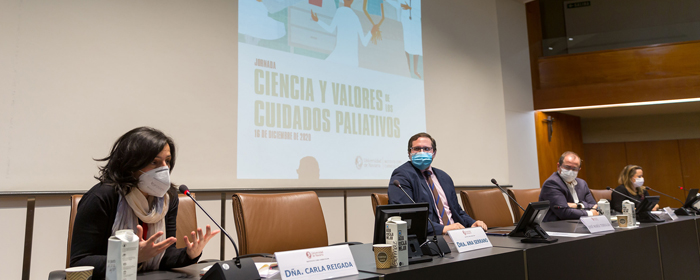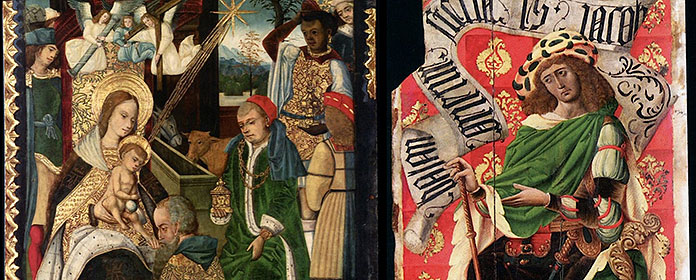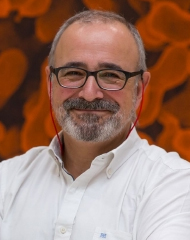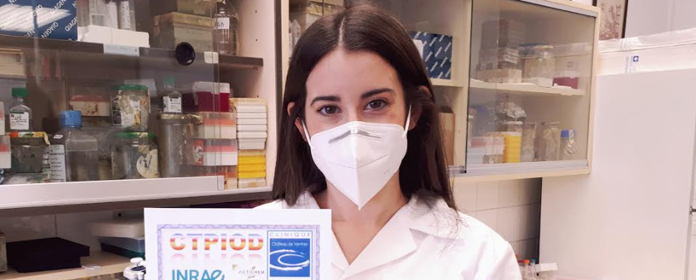La investigación en la era 2.0: una aventura digital personalizada para conocer tradiciones lingüísticas en peligro de extinción
Samuel Liebhaber, investigador de Middlebury College, presentó su proyecto de humanidades digitales sobre la poesía Mahri de Yemen
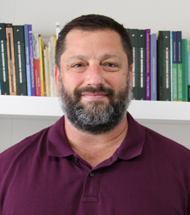
FOTO: Natalia Rouzaut
La investigación ya no se publica solo en papel, también puede ser nativa digital. Así lo ha demostrado Samuel Liebhaber, investigador de Middlebury College (EE.UU.), quien presentó su proyecto de humanidades digitales llamado ‘When melodies gather’ durante un seminario organizado por el proyecto ‘Discurso público’ del Instituto Cultura y Sociedad (ICS) de la Universidad de Navarra.
“Las humanidades digitales permiten imaginar nuevas formas de expresar la narrativa académica y de visualizar los datos”, ha asegurado el investigador. Liebhaber es experto en literatura árabe e investiga la tradición poética de los Mahra, una comunidad yemení de alrededor de 200.000 miembros cuyo lenguaje es exclusivamente oral. “La composición de su poesía se basa puramente en una experiencia cognitiva y psicológica puramente oral”, ha explicado.
¿Cómo es posible mostrar en una publicación científica la riqueza de la poesía Mahri sin quedarse en la mera transcripción? Liebhaber trabajó con un equipo de técnicos de su propia universidad, Middlebury College, y de la editorial Stanford University Press y presentó su investigación desde un nuevo ángulo: puramente digital.
Su publicación ‘When melodies gather’ tiene un formato web por el que se puede navegar interactivamente, accediendo a la información según los propios intereses de cada usuario. Según el autor, esta interactividad permite mejorar la implicación con el conocimiento ya que “puedes personalizar el encuentro con la investigación de una forma que no es posible en una monografía impresa”.
Sin embargo, el experto no cree que las humanidades digitales vayan a desplazar a la investigación en papel. Considera que ambas pueden coexistir y apoyarse mutuamente.
Un ejemplo de convivenciaPara apoyar la posibilidad de coexistencia entre dos formatos distintos, ha propuesto el ejemplo del lenguaje Mahri. La población Mahra es un pequeño reducto en el mundo árabe y toda su población es bilingüe: utiliza el árabe para escribir, en los centros educativos y en los medios de comunicación y, a su vez, ha mantenido la tradición de la lengua Mahri.
El experto ha apuntado que las generaciones más jóvenes se han acostumbrado a utilizar el árabe al serles más útil en su día a día. Esto puede poner en peligro la preservación de esta lengua ya que, si se rompe la transmisión generacional, el número de hablantes se reduciría drásticamente.
Sin embargo, Liebhaber ha asegurado que, en sus entrevistas con los Mahra, esta población no sentía el árabe como un idioma invasivo ni veía su lengua en peligro de extinción. Ha afirmado que los Mahra están “orgullosos de esa herencia árabe y de su lengua extraordinaria al mismo nivel que lo están de la lengua Mahri”. Según ha explicado, ambas tradiciones lingüísticas han conseguido mezclarse hasta el punto de encontrar un equilibrio “que cambia de generación en generación”.
Así, el investigador cree que los Mahra suponen un ejemplo para otras comunidades bilingües, mostrando que el tener dos lenguas no tiene por qué suponer un problema de convivencia. “Los Mahra nos ofrecen un modelo lingüístico en el que conviven dos lenguas distintas sin necesidad de una sensación de crisis o conflicto entre ellas”, ha concluido.
El experto habló de estos asuntos en el marco del proyecto Marie Skłodowska-Curie 'Locked between formulas: creativity in oral and transitional poetic texts' (ORFORCREA), financiado por el programa Horizon 2020 de la Unión Europea (2017-2019; proyecto 749952).


